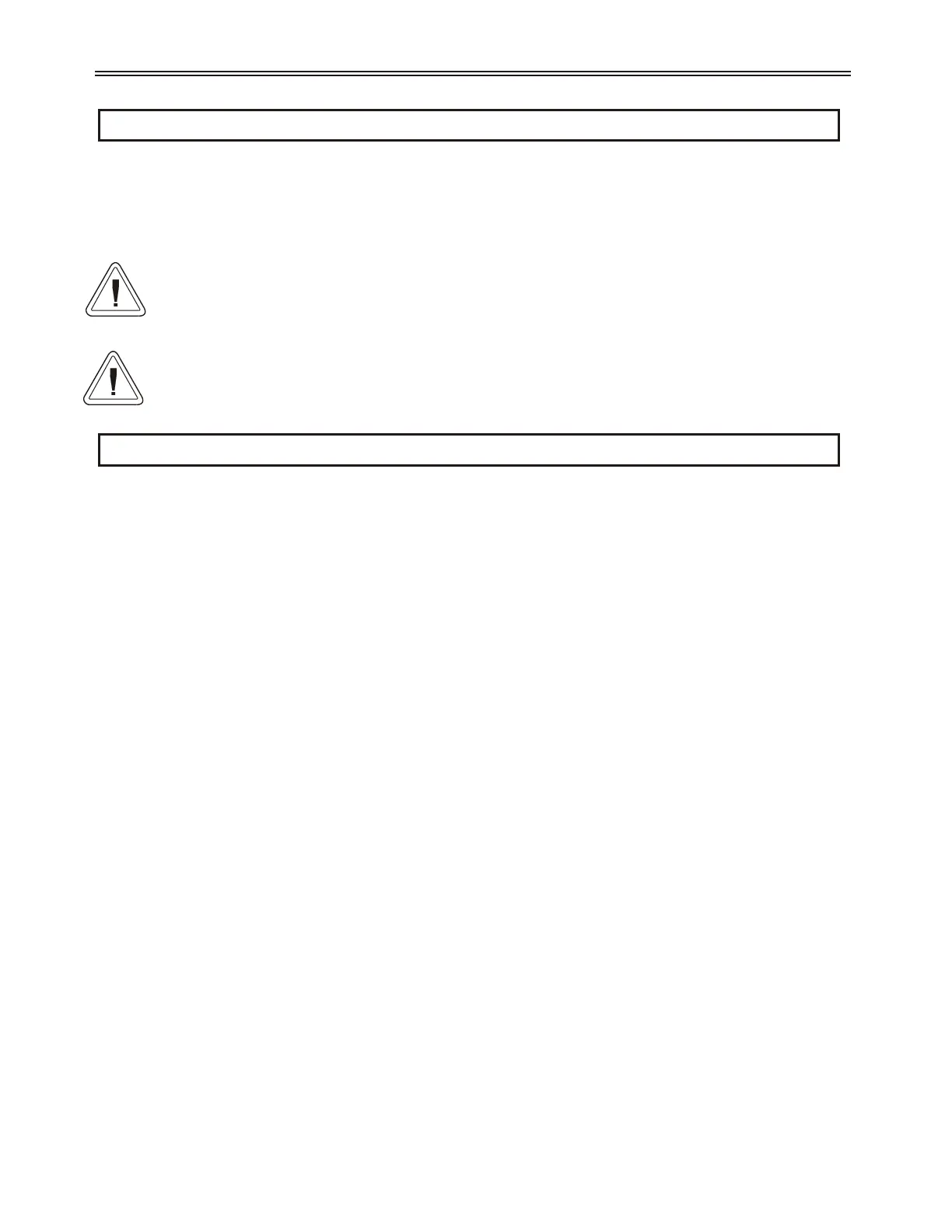8TROUBLESHOOTING & MAINTENANCE
Safety Precautions
8.1 Safety Precautions
For safety of maintenance personal as well as others who might be exposed to electrical hazards associated with maintenance activities,
the safety related work practices of NFPA 70E, Part II, should always be followed when working on electrical equipment. Maintenance
personnel must be trained in the safety practices, procedures, and requirements that pertain to their respective job assignments.
WARNING: To avoid shock hazard, disconnect main power before working on controller/starter, motor or control devices such as
start/stop pushbuttons. Procedures which require parts of the equipment to be energized during troubleshooting, testing, etc. must be
performed by properly qualified personnel, using appropriate work practices and precautionary measures as specified in NFPA70, Part II.
CAUTION: Disconnect the controller/starter from the motor before measuring insulation resistance (IR) of the motor windings.
Voltages used for insulation resistance testing can cause failure of SCR's. Do not make any measurements on the controller with an IR
tester (megger).
Preventative Maintenance
8.2 Preventative Maintenance
8.2.1 General Information
Preventative maintenance performed on a regular basis will help ensure that the starter continues to operate reliably and safely. The
frequency of preventative maintenance depends upon the type of maintenance and the installation site’s environment.
z NOTE: A trained technician should always perform preventative maintenance.
8.2.2 Preventative Maintenance
During Commissioning:
• Torque all power connections during commissioning. This includes factory wired equipment.
• Check all of the control wiring in the package for loose connections.
• If fans are installed, ensure proper operation
One month after the starter has been put in operation:
• Re-torque all power connections. This includes factory wired equipment.
• Inspect the cooling fans to ensure proper operation.
After the first month of operation:
• Re-torque all power connections every year.
• Clean any accumulated dust from the starter using a clean source of compressed air.
• Inspect the cooling fans every three months to ensure proper operation.
• Clean or replace any air vent filters on the starter every three months.
z NOTE: If mechanical vibrations are present at the installation site, inspect the electrical connections more frequently.
174
8 - TROUBLESHOOTING & MAINTENANCE
